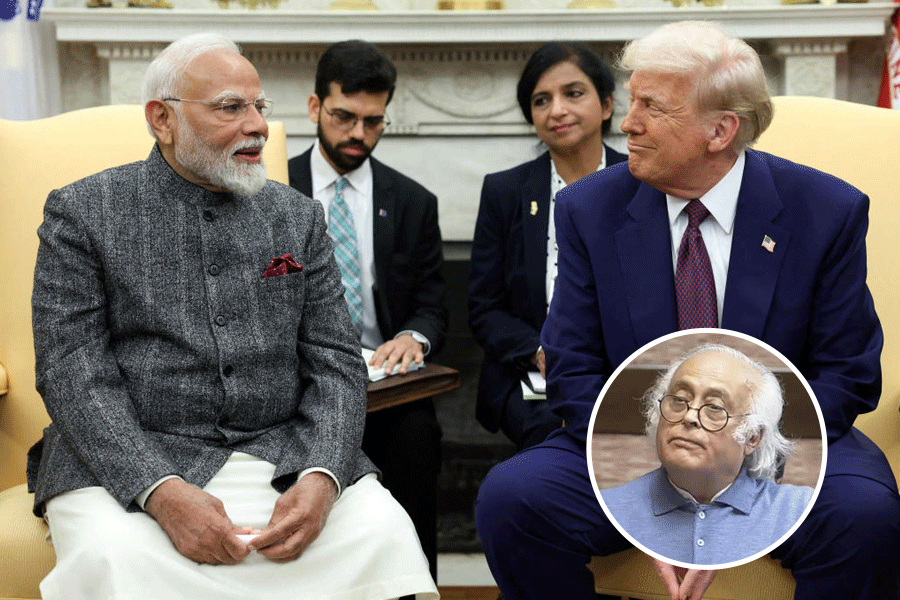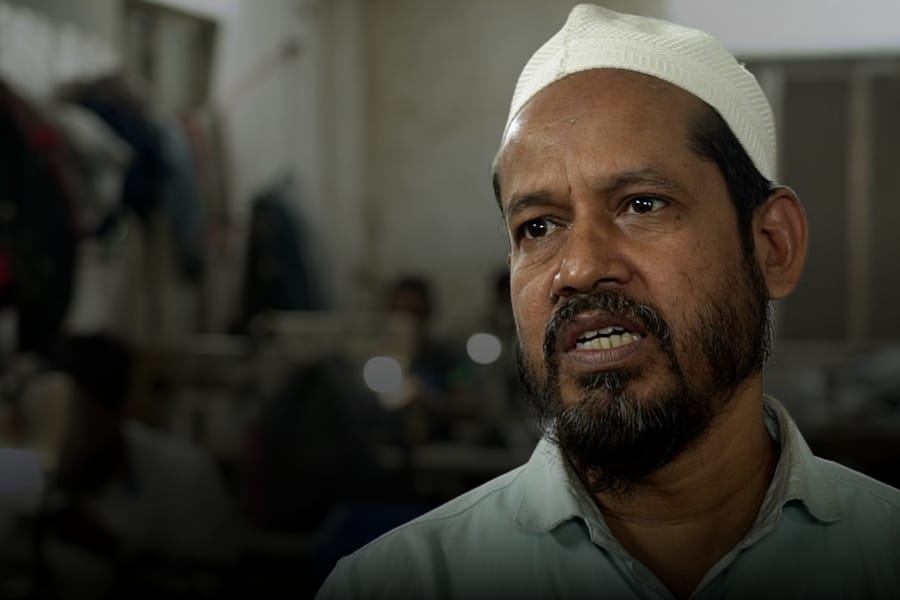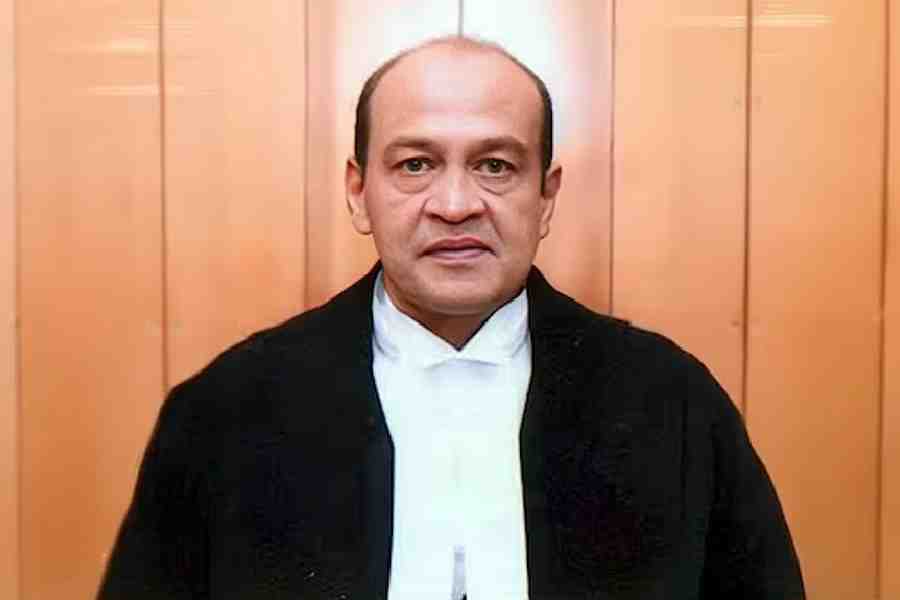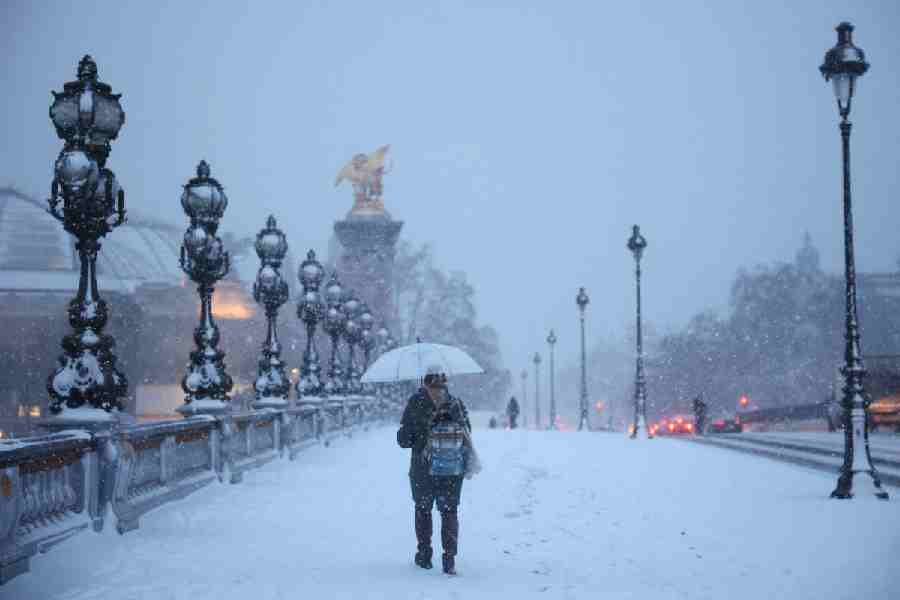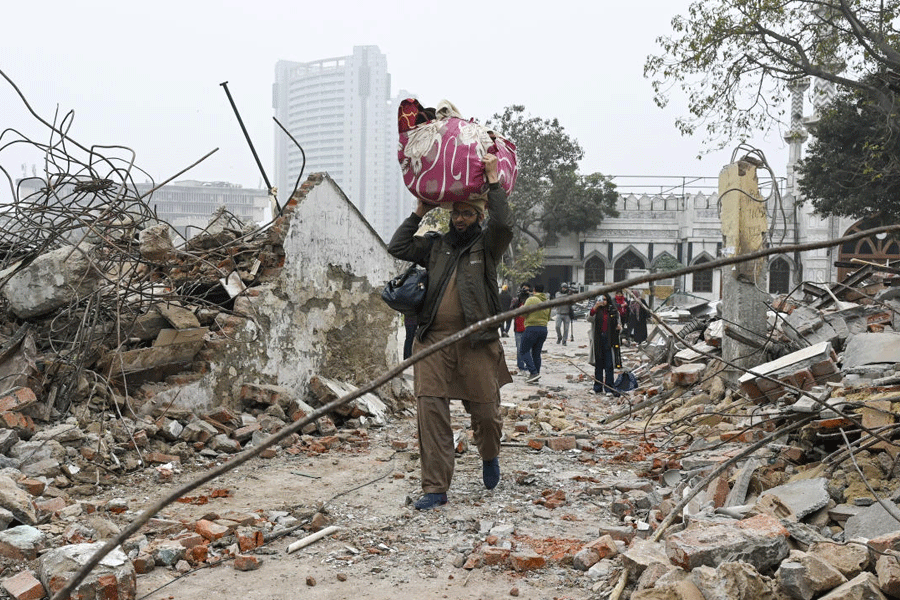 |
Eighty-four years ago, about five years after Sir Ashutosh’s demise and some three or four years into this lecture series, a dashing physician and Congress politician in this city was in discussion with the Calcutta University authorities of the day. Together they decided that Mahatma Gandhi — none other — be invited to deliver the Kamala lecture, that year.
The physician — B.C. Roy, 40 years young — was the one to, shall we say, bell the goat. And in a hand-written letter he asked Gandhi to deliver the Kamala lecture and even suggested the subject — “The Future of India” — no less. At that point in time, Gandhi was the future of India.
The British raj of the day, strong and imperious, was as alienated from the people it was ruling as it could be and with Lala Lajpat Rai having a Simon Commission lathi land on his brave and proud chest, India’s nationalist thermometer was on the climb. Bhagat Singh in the land of the five rivers, Jatin Das and the great names which were to be sounded and re-sounded two years later on a crackling night at Chittagong, were mounting the scaffold of martyrdom. Here, in and around this very university, Time was readying Bina Das, firm of commitment but, fortunately for the governor-chancellor, Jackson, very un-firm with firearms, to reach out to a pistol. And Subhas Chandra Bose, working towards the largest Congress session ever to be held that year in Calcutta, was seen for the first time in military-type gear, evoking awe and a new self-confidence. As he drove around the city’s streets, a mother could be heard telling her little son, “Oi amader Subhas Chandra Basu aschen. Hat jor kore nomoskar koro baba…”
And quietly, like a village ditty sung under one’s breath, Bibhutibhusan’s Pather Panchali appeared that very year in serialized form. Not too many read it at the time, but those who did doubtless found in its lines a sense of two Indias and two Bengals coexisting uneasily, one that was about fantasies of power and the other about reality, one about the Bengal of vainglory and the other recognized and felt as ‘my Bengal’.
There was thus a logic to inviting the Mahatma to speak on “The future of India”. But logic and the Mahatma did not always go together. He relied most of all on that enigmatic thing he described as his “inner voice”, wholly inaudible to others and, when heard through Gandhi’s own explanations of it, wholly befuddling. Gandhi pondered Bidhanbabu’s invitation and, inner voice acoustics firmly in place, replied: “Dear Dr Bidhan… Apart from the fact that as a non-cooperator I may have nothing to do with the university that is in any way connected with the government, I do not consider myself to be a fit and proper person to deliver Kamala lectures. I do not possess the literary attainment which Sir Ashutosh undoubtedly contemplated for the lecturers.”
Eighty-four years on, with the British empire resting retired in the pages of history books, the republic of India is acknowledged as one of the world’s tallest democracies. Yet, who can deny that it is undergoing a deep decline in self-esteem? Elected representatives of the people have status. But status is one thing, stature is another. Politics is not the nation’s most admired vocation, nor are politicians the public’s darling. Political leaders being driven round on a city street anywhere in today’s India would receive partisan cheers with slogans preceding and following them but would any one of them make a mother tell her little child, “Hat jor kore nomoskar koro, baba”? I wonder. And just as in 1928, so too now two Indias are to be seen. One the India of financial and technological clout, the other of multiple vulnerabilities. And violence is in the air. Men and women are reaching out, firm of commitment and equally firm of hand, to guns. Most of these are illegal. None of them the less lethal for being so. And is Gandhi the future of India? Ask Gujarat.
We live in a virtual world where make-believe takes the place of the real. And so a speaker is identified, one who cannot speak on the future of India but claims a connection to the man who declined to speak. Never mind that he has no inner voice to rely on, only a much-exercised outer one. Such is the penury of self-denial today, such the reign of presumption and such the working paradox of ascent by descent, that a Tucchhatma with alacrity accepts what a Mahatma so respectfully declined.
Bengal engages, as do many other or, even most, parts of India. Bengal preoccupies, as would any place one lives in or around for a length of time. But Bengal does more — it suffuses the minds of those who come in contact with it in a way few other places do. One may even say it obsesses them. And depending on the manobhava of the person concerned, Bengal all but takes over that person’s mental tapestry right along its weave, its stitch, its paint. Bengal also seems to work with Fate in a strange concordat to overpower those that come in contact with it, sometimes tragically, sometimes redemptively, but at all times definingly. You are one thing until you touch Bengal or Bengal touches you. And then you are another.
It has been so with many, it has been so with me.
The window to my Bengal opened not here but at school in Delhi. Our music ‘master’, a venerable Bengali gentleman, tried his best to teach scores upon scores of unmusical children how to sing, play on the esraj, violin and sitar. He had two promising students.
One was a couple of years younger than I, who spoke little, and that softly, kept largely to himself, played the sarod and is now celebrated as Ustad Amjad Ali Khan.
The other student was of my age.
The famous father of two famous daughters, Pandit Ravi Shankar is not associated in the public mind with his son and that of Annapurnadebi. And Shubhendra Shankar is not a name we would immediately recognize today, although he is formally listed among his mother’s disciples. Shubho and I were in the same class. He was not what is called in schooltime speech ‘my best friend’, but he was a deeply valued one. The sweetness of his spoken voice, the softness of the sitar he played, the gentleness of his manner showed he had nothing — thank god — of Delhi in him. He was for me, Bengal. We had one non-Bengal thing in common, though — neither of us was into sports, particularly football, our school’s great boast. When others spilled into the football field like some Charge of the Light Brigade, Shubho would wander off, with me in trail, to talk of everything in general and nothing in particular. There was a faraway look to his eyes, a sadness beneath them, a sense of something missing from his life, something that should have been but is not. I was not imagining this. A good quarter of a century, almost, before Time claimed the nonagenarian father from a sorrowing world, Time had claimed the son in silence. Mortality is impervious to chronology.
And so, even as a Bengali meal starts with ‘tikta’, my Bengal starts with a sense of Shubho’s almost musical sadness. I can never listen to the opening score of Pather Panchali without thinking of Shubho. My Bengal has therefore been inextricably associated with sorrow.
To be true to myself I must add that I have never responded with anything but dismay at the overdone description of Calcutta as the ‘City of Joy’. Dominique Lapierre’s novel and Roland Joffé’s film of it have many things going for them but what works for them as a title is not meant for mindless adoption and repetition out of context. And though Rabindranath has called himself the poet of ananda, an overwhelming number of his songs and his paintings, particularly his self-portraits, tell me that if ananda permeated his sensibility, so did dukkha and that, in fact, a pramukha bhava if not the pradhana bhava of Rabindranath’s works seems to me to tend to sadness rather than to exultation.
When the agronomist, Jyotiprasad Bhattacharjee, was introduced to my parents by my sister who was later to marry him, conversation with my cautious father and observant mother naturally turned to Tagore. One thing led to another and Jyotibhai, as we called him, found himself being asked to sing. Quite effortlessly, Paagla Haaoar Baadal Dine ensued. The young suitor and later bridegroom had to repeat the performance several times, including on the long distance phone of the ‘three minutes over’ type for my by now absolutely delighted father and heartily reassured mother. The lasting impression made on my mind, however, was by Jyotibhai’s rendering of another song — Nibirho Ghana Aandhare which, in spite of its brave extolling of hope, remains completely under the shade of its dark opening words.
Aekla Chalo Re is an energy-giving song and Juthika Roy has immortalized it by her rendition of it, even as Nandalal Bose’s woodcut visualization of the lonely pilgrim has etched for itself a permanent place in the world of art. Gandhians in general tend to be rather unmusical, but thanks to Gandhi’s ashramik practice, they sing and they sing this song, in and out of sur in and out of season. But whenever it is that they sing Aekla Chalo Re the song rings very, very true. Why? Because of its association with a very sad, indeed tragic, passage in Gandhi’s life and in the sub-continent’s history.
The Tagore song which, in my opinion, is of far greater magnetism in Gandhi’s Bengal connection is, however, not Aekla Chalo Re. It is Jibono Jokhono Sukae Jae. This most heart-wrenchingly sad song was sung at his instance, when he broke his fast in Calcutta on September 4, 1947 and which was sung again upon his breaking the final fast of his in Delhi shortly before his assassination. As Gandhi fell, on January 30, 1948, life ebbing out of him, a daughter of Bengal, his grand-niece in law, Abha Gandhi née Chatterjee, held the sinking head and lowered it gently onto what can only be called Bengal’s lap. Music was not in the air at that moment, only the smoke from a fanatic’s pistol. But I would like to imagine that somewhere above and around that scene an inaudible voice from here in Bengal, Juthika Roy’s, perhaps, or the future Iffat Ara Dewan’s, began softly to sing “Jibono Jokhono Sukae Jae…” Whenever I visited Hydari Manzil in Beliaghata, I heard its walls, mute and muffled, sing that song.
That song is not for and about Mahatmas alone. It applies to simple folk who are not securing the future of India but are the children of other children of Time, occupying the Space that Chance has allotted them and which holds in it the entire range of the human type, the human experience, the human lot in which love and loss are the twinned centrepiece.
I last heard the song at Santiniketan rendered beautifully by Sangita Bhavana children at the Kristotsab gathering at the Mandir, in 2008. Among the singers was one girl with large expressive eyes, seated near the glass wall. She was singing with particular feeling.
Within a few weeks of that, the girl’s lifeless form was being taken home. Svati had been shot and killed by a young man in the hostel. Her Sangita Bhavana classmates, dazed with shock and grief, sang Jibono Jokhono.
With notable exceptions, love and its loss, deprivation and sorrow are to be seen in Tagore’s plays, stories, short or novel-sized. All this is of course ascribable to Rabindranath’s personal experience of tragedy. But it has also something to do with the fact that in Bengal’s sensibility, tragedy possesses or is possessed by (to use an Einsteinean phrase) a “unified field”.
This embraces the site of tragedy, its environs, it holds the particularism of the grief and then responds to it multi-resourced — through individual expression, adjacent responses, collective reactions, through word and action, sometimes creative, sometimes destructive but at all times inevitable.
I do feel — and I have said ‘feel’ not ‘think’ because this is about an impression, not a finding — Bengal is receptive to sorrow in a way few other places are, and sorrow does not disappoint Bengal. Bengal knows grief and grief does not let Bengal forget it. Bengal is attuned to tragedy and tragedy does not keep Bengal waiting.
I have often asked myself why should Uday Shankar go to Almora, Ravi Shankar to San Diego, even Debu Chaudhuri to Delhi, Kishore Kumar, Geeta Dutt, Bimal Roy, Hrishikesh Mukherjee, Hemanta Kumar to Bombay, Devika Rani to Bangalore, Niradbabu, Bimal Matilal, Tapan Raychaudhuri go to Oxford and, conversely, why should Guru Dutt come here to Calcutta to make his heart-wrenching Pyaasa… or Kiran Desai position herself in Kalimpong to write The Inheritance of Loss?


